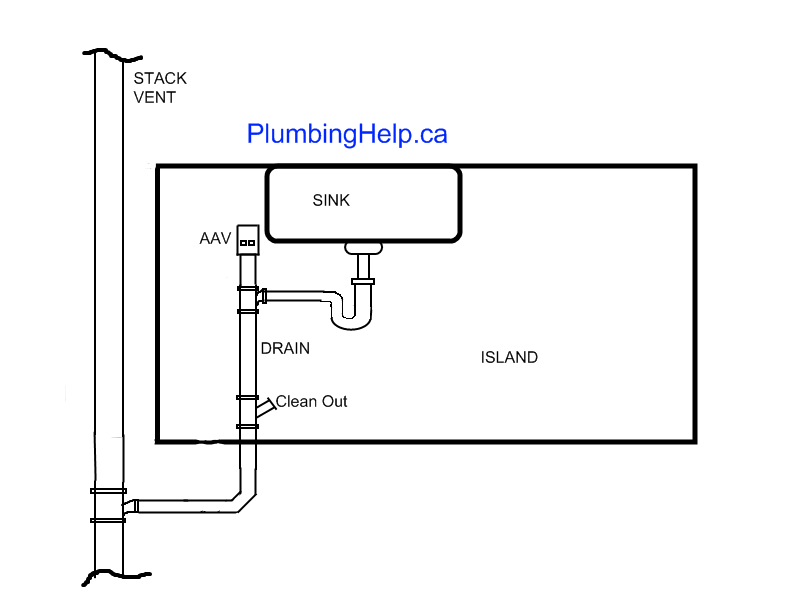Venting an island sink cannot be accomplish the way other fixtures are vented because of the distance from walls, where the vent would normally be hidden. There are a few ways to vent islands sinks and in this article you will see the “island vent method”, extended fixture outlet method as well as the air admittance valve(cheater vent) method.
Island vent method
 The “island vent” is the most accepted way to vent an island sink and should be permitted by inspectors in most areas. The basic principle is simple, the vent comes from below the floor and is tied into the drain pipe from the top, this allows the waste water to drain normally while fresh air is brought in to protect the trap.
The “island vent” is the most accepted way to vent an island sink and should be permitted by inspectors in most areas. The basic principle is simple, the vent comes from below the floor and is tied into the drain pipe from the top, this allows the waste water to drain normally while fresh air is brought in to protect the trap.
Installation tips
- Install horizontal drains with a downward grade of 1/4″ per foot.
- The vent can be taken to a nearby wall or also run to the stack and tied in above the drain.
- Install clean out fittings in accessible places.
- Bring the loop as high to the counter top as possible and it should be one pipe size larger than the drain.
Through the floor method
 A new provision was made in the 2005 Canadian Plumbing Code to allow for fixtures; such as island sinks, to be vented normally. The change was to allow for the fixture outlet pipe to be taken through the floor and then the trap arm would be connected to a vent. (click the picture to expand it)
A new provision was made in the 2005 Canadian Plumbing Code to allow for fixtures; such as island sinks, to be vented normally. The change was to allow for the fixture outlet pipe to be taken through the floor and then the trap arm would be connected to a vent. (click the picture to expand it)
Air admittance valve island vent method
 Another and much easier method of venting an island sink is to install an “air admittance valve” (AAV), however this may not be an acceptable solution in many area’s. Always consult your local authority for the latest code requirements. An AAV will allow air to be sucked in whenever the drain pipe has a negative pressure, but will remain closed under normal conditions to protect the home from sewer gasses. These devices are mechanical and all things mechanical are destined to fail, making them the least desirable of the two venting methods.
Another and much easier method of venting an island sink is to install an “air admittance valve” (AAV), however this may not be an acceptable solution in many area’s. Always consult your local authority for the latest code requirements. An AAV will allow air to be sucked in whenever the drain pipe has a negative pressure, but will remain closed under normal conditions to protect the home from sewer gasses. These devices are mechanical and all things mechanical are destined to fail, making them the least desirable of the two venting methods.

Installation tips
- Buy an Air admittance valve that is certified for your country (CSA, ANSI)
- AAV’s are usually installed higher than the fixture they’re venting so get it as high to the counter top as possible.
- Apply teflon tape to the threads of the AAV. Do not use pipe dope or other thread sealants.
